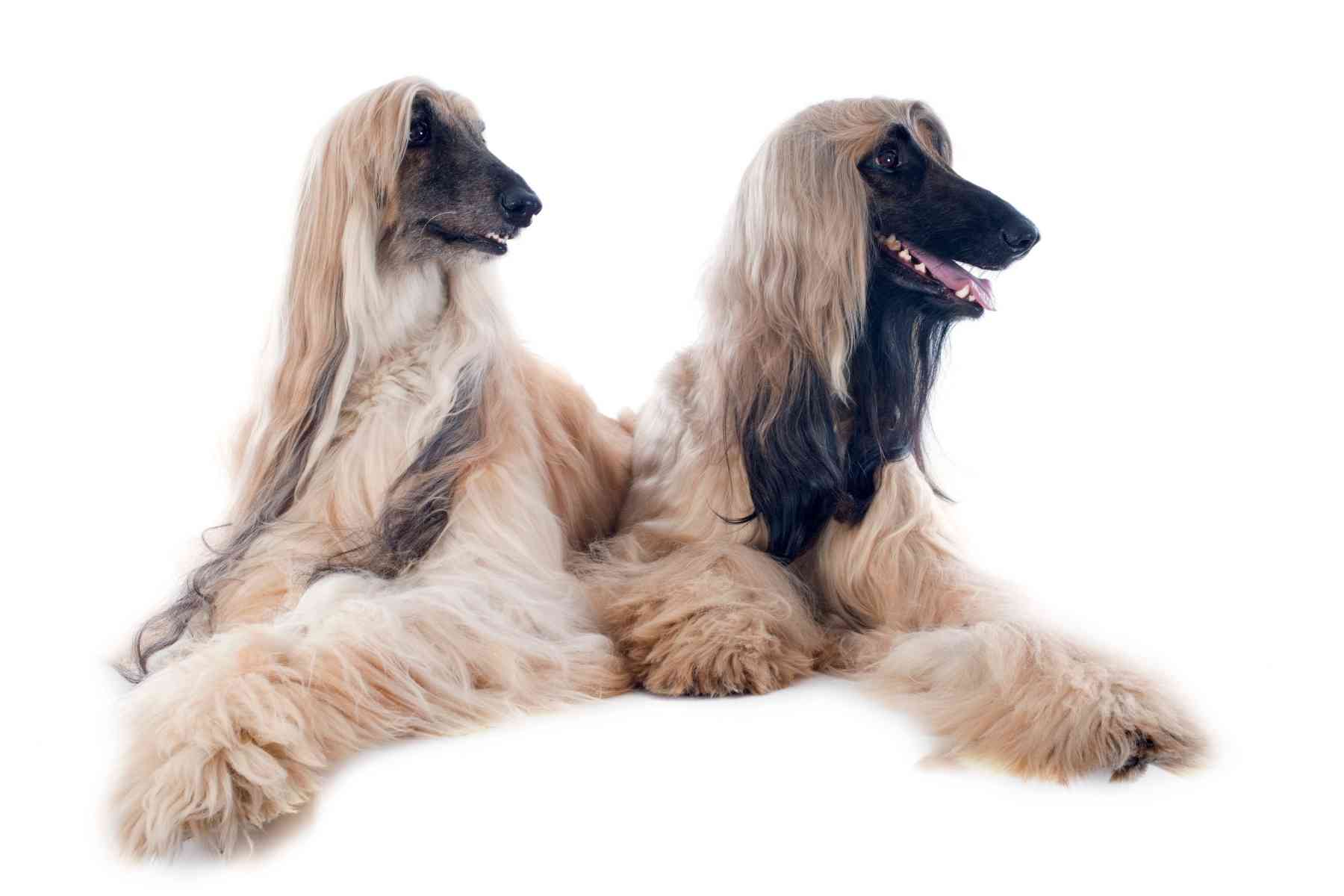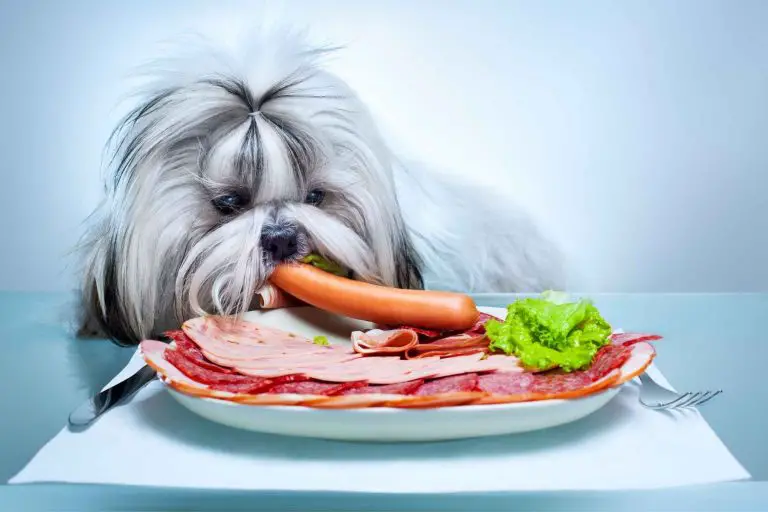How Many Hairs Are On a Dog?

A dog has around 2,160,000 hairs per square foot of skin. This is about 15,000 hairs per square inch. A small dog would have around two million hairs, and a large dog up to eight million. A dog can shed around 2,000 of these hairs per day – more after winter and summer.
In this article, I’ll look at the amazing amount of hairs on a dog and when they shed them, along with what sort of shedding is abnormal and how to keep the hair load down in your house.
What Is the Hair Density On a Dog?
With 15,000 hairs per square inch of skin, a dog’s hair density is a lot greater than humans, who have less than 1,000 hairs per square inch on their heads. Some other animals have even greater hair density, though: otters, for example, have 1 million hairs per square inch.
How Many Hairs Does a Dog Shed?
A dog will typically shed or lose 2,000 hairs per day. Most breeds also shed more after winter and after summer.
Many breeds grow a thicker undercoat during the winter and lose more of it in spring and more after summer.
Because dogs don’t sweat, except in the pads of their feet, the distribution of their hair plays a vital role in maintaining their temperature.
Which Dogs Have the Most Hair?
While an average dog may have 15,000 hairs per square inch of skin, this varies enormously between breeds.
In general, dogs with silky coats or longer hair will shed more than dogs with short or coarse coats.
How Is a Dog’s Hair Made Up?
There are three types of hair on most dogs: undercoat, guard hair, and whiskers.
The undercoat lies closest to the dog’s skin. It is downy and soft, and protects the dog’s skin from cold weather.
The guard hairs of most breeds are thicker, longer, and of a harder texture than the undercoat. It has the color and texture that we see and feel and is known as the dog’s primary coat.
Whiskers are also hairs, but they grow from special, deeply-rooted skin follicles, which give the dog an extra ability to pick up sensory information when they brush against something.
Dog hair is made of keratin and skin cells, the same as human hair.
What Causes Dogs to Shed Hair?
Apart from the usual daily loss and replacement, seasonal shedding is triggered by the length of the days (the number of sunlight hours) and the temperature.
As days grow shorter and cooler, the dog sheds its light summer undercoat to make room for the thick winter undercoat to grow.
When the days become longer, and the temperatures warm up, this winter undercoat is shed, so that the dog can stay cool.
What Can Hair Tell Me About My Dog?
Your dog’s coat is an excellent indicator of many things about their general health. Whatever the coat’s color, texture, or thickness, hair on a healthy dog should be, to some extent, glossy, looking full and sitting well.
If the coat looks dry and dull or lifeless, and the skin is irritated or itchy, something is amiss with the dog’s health.
When Should I Worry About Hair Loss on My Dog?
It is good to know the seasonal times when your dog sheds and how much they tend to lose. This will be an essential indicator of their health, and if this significantly changes, you need to consult a vet.
Excessive hair loss can indicate conditions such as:
- Parasites (fleas, mites, lice)
- Allergies
- Poor nutrition or malabsorption
- Fungal infections
- Bacterial infections
- Thyroid or adrenal issues
- Kidney or liver disease
- Anxiety or stress
- Sunburn
- Cancer
- Immune disease
Pregnancy or side effects from medication can also be indicated by hair loss.
Which Dogs Shed the Least?
Some breeds are known as low shedders, and these include miniature poodles, Maltese, and Australian, Irish and Airedale terriers.
Which Dogs Shed the Most?
The high shedding breeds include the German Shepherd, Golden Retriever, Saint Bernard, Labrador, Akita, and Siberian Husky.
How Can I Get Rid of All the Dog Hair?
Brushing Every One to Three Days
The RSPCA recommends brushing your dog every one to three days.
This has the advantage of trapping the dog’s hair in the brush rather than allowing it to fall out naturally all over the house.
Establish a brushing routine with your dog, particularly when it is young. A short brushing session before or after being fed in the evening often works.
A Quick Daily Clean
According to the RSPCA, dog hair that has been freshly shed is much easier to clean up. Once dog hair has been trodden into the carpet or rolled into furniture, it’s almost impossible to get out, so regular cleaning is better in the long run.
Use Blankets
Training dogs to sit on a designated pet blanket can also help, as you can shake these blankets outside and wash them.
Consider Your Flooring
If your house has hard flooring, it will be a lot easier to catch and clean up dog hair.
If you have carpets and a lot of soft furnishings, you may wish to consider the dog breeds which shed less.
How Long Can Hairs on A Dog Grow?
Most dog breeds have coats that grow to certain, genetically determined lengths, which give them their characteristic style. However, poodles have coats that need to be clipped, or else they continuously grow, like human hair does.
What Is a Double Coat on A Dog?
Dogs with both a strong undercoat and a strong primary coat are said to have a double coat. The collie is one breed with a double coat.
What Is a Silky Coat on A Dog?
Dogs with mostly the primary coat, but little or no undercoat, are called silky coated.
What Is a Wire Coat on A Dog?
Wire coated or wire-haired dogs have a short, rough coat that feels bristly. They can also be called broken coat breeds. Dogs with a wire coat often have a pronounced beard, mustache, and eyebrows.
How to Groom a Wire Coated Dog
Wire-haired dogs need a special grooming technique called hand-stripping.
The American Kennel Club describes stripping as a process that can be done at home, following these steps.
- Pluck out dead hairs from the wire coat with your fingers whenever you have a few minutes and your dog is relaxed.
- Double Brush, Double Comb: once a week, brush the wire coat with a pin brush, and detangle it with a medium-toothed comb. Then use a fine-toothed comb to get down to the skin, which will remove a lot of dead hair. At the end, go over the whole coat with a slicker brush.
A groomer can also take care of this process for you.
What if I’m Allergic to Dog Hair?
No dog is entirely non-allergenic, but the low shedding breeds are often tolerated well by allergy sufferers.
Using a specialist pet vacuum which traps hair, and an air purifier, as well as regular cleaning, can keep the hair load down.
Are There Hairless Dogs?
There are several breeds of hairless dogs.
The Chinese Crested has hair only on parts of its body. Other hairless breeds are the American Hairless Terrier, Mexican Hairless (Xoloitzcuintli), Argentine Pila, and Peruvian Hairless.
Hairless dogs may need clothing to keep them warm.






